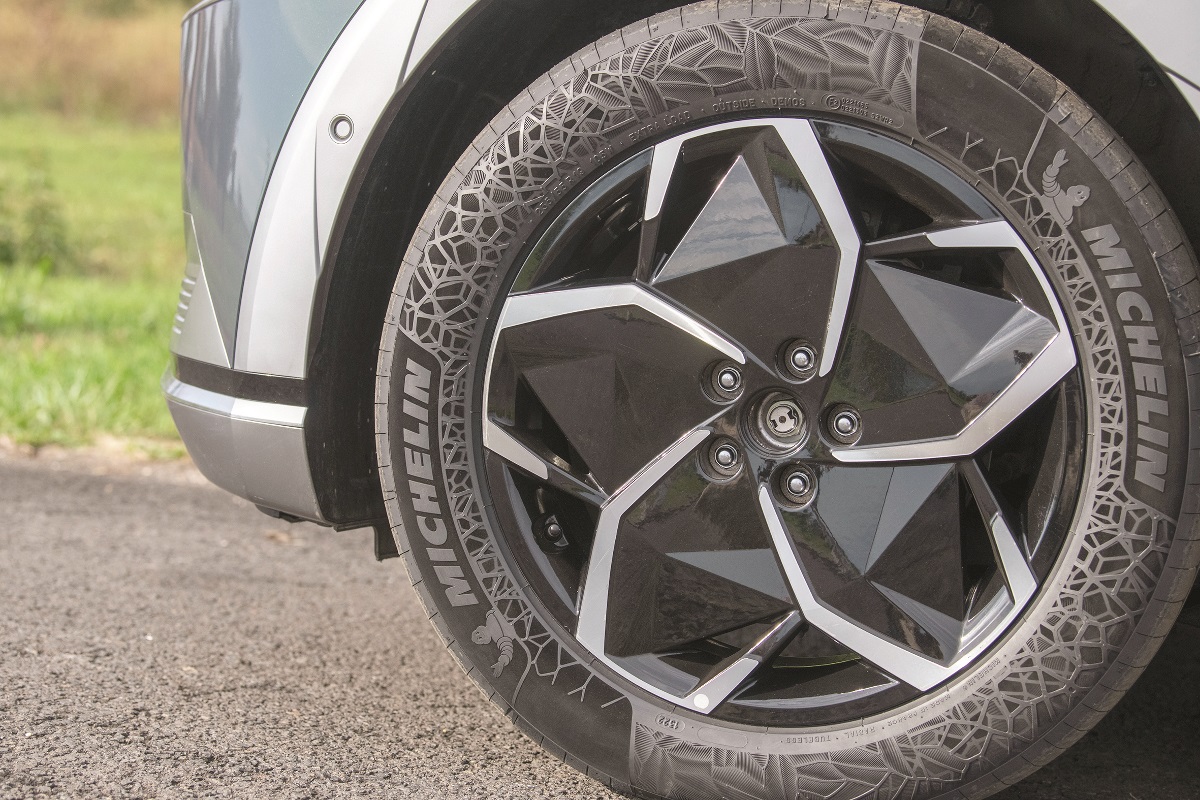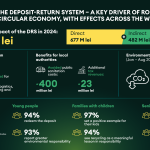
The tyre, where to?
Foto: Michelin
Cars have evolved and will evolve still. I kept practicing the right to look through the keyhole and to foreshadow what is to come. But the tyre, that part of a car that unfairly gets a lack of attention and respect… where is it heading, how will it look like in the future?
I have received answers from Michelin at the International Media Days event organised by the French manufacturer.
If 30 years ago a Renault Clio Williams offered 145 hp, now a Renault Clio E-Tech develops 140 hp. A similar level of power, only then it was a super sports model and now it’s a B-segment hatchback that’s in the standard offering. I could talk about a spectacular “arms race” when it comes to the horsepower on offer and performance of models over the last 10-15 years, but really, none of the above would have been possible without the huge advances in tyres.
And to understand the importance of a tyre, let me tell you that the contact between our car and the road surface is reduced to a contact patch with an area equal to that of an A4 sheet, an area that reduces with speed.
To understand what has driven the development of tyres, statistically, over the last 60 years, car height has increased by 21%, width by 14% and length by 3%. But perhaps one of the most important details, their weight has increased by over 40%. A consequence of this increase in weight is an increase in tyre size.
If a compact minivan of 25 years ago could be equipped with tyres from 14 to 16 inches, the same compact minivan is offered today with tyres up to 21 inches.
In 2011, 54% of the car tyre market was accounted for by the 15-inch size and 42% by the 16-inch size. The 18-inch accounted for 2% of the market. In 2021, 15-inch still accounts for 19% of the market, and that’s because they’re still running on 2011 models, as otherwise this percentage would be significantly lower.
And electric vehicles are synonymous with an increase in the weight of a car, by at least 20%, compared to the combustion version.
The increase in the weight of cars is the main reason behind the need for bigger tyres. But the need for performance, increased power and the manner in which it is delivered to the ground has also led to the evolution of the compound to give the tyre both grip and durability over time.
Michelin is one of the tyre manufacturers that invests heavily in research and development – at the moment the annual investment is around €650 million. But this is not a recent concern. Michelin has invested heavily in reducing the drag offered by their tyres. In 1992, the French launched Michelin Energy, the manufacturer’s first tyre to focus on reducing drag at a time when this value was in around 12 kg/tonne. Energy 2, Energy Saver VLET, Energy Saver+ followed, and in 2021 the e.Primacy and Pilot Sport EV – tyres offering 5.5 kg/tonne drag – were launched. And in the future it is expected to reach below 5 kg/tonne.
Reducing the drag of its products has, for example, saved 3.4 billion litres of fuel over the lifetime of tyres in 2021, thus preventing 8.7 million metric tonnes of CO2 compared to 2010.
Motorsport has been, is and will be a laboratory where Michelin will be present to develop new technologies. Michelin has been a technical partner for Formula E since its inception, for 8 seasons. And the technology behind the tyres developed for electric single seater racing cars has already reached serial production. Just two years into its involvement in Formula E, Michelin has managed to increase the autonomy of its single-seaters by a further lap by reducing drag, and after four years to reduce tyre weight by 25% without affecting performance. And all this can be found today in serial produced products.
However, in addition to the way cars have evolved, the way we humans consume cars has also evolved. For one, global warming is a fact of life, we have days that flirt with early summer in the middle of winter and code red blizzards and significant snow cover in the middle of spring. This makes it slightly inappropriate for the authorities to force drivers to have winter tyres fitted within a defined time frame.
Then, operational leasing, fleet management and car sharing raised the issue of cheaper resource management and reduced downtime.
That’s how the All-Season tyre was born. Such a tyre does not have a happy reputation, because it is intended as a compromise, in terms of tread design and composition, between a summer and a winter tyre. And it doesn’t really perform well… neither in summer, nor in winter.
Michelin has launched CrossClimate, a tyre that is generically called All-Season.
The French tyre manufacturer, which has three production sites in our country, has chosen a different way to develop such a tyre. It started from a summer tyre, preserved its qualities, developed a new tread profile that doesn’t look like a winter one, and developed the compound to the level where this tyre can also perform in the cold season, as it is a 3PMSF – Three Peak Mountain Snowflake certified All-Season tyre. In other words, we are talking about a tyre that is accepted as an approved winter tyre, and which in certain regions or countries is compulsory between November and March.
Michelin CrossClimate is the French manufacturer’s response to a European all-season tyre market that in 2015 was worth 14 million units, in 2022 reached 44.5 million units and is forecast to grow by a further 11.5% over the next 5 years.
A confirmation in favour of Michelin CrossClimate is that car manufacturers are already choosing this tyre as factory equipment for their models.
Is Michelin ready for Euro 7 standards?
We already know that future pollution rules will also impose standards for tyres in terms of particulate emissions. Studies conducted by independent bodies have shown that Michelin tyres have emissions of 1.6 kg of particulates per 20,000 km/year. The lowest performing tyre in the test had emissions of 8 kg particulates at 20,000 km/year.
The French manufacturer is campaigning for a global, not just European, tyre standard. This is a first step that can lead to limiting the market access of polluting tyre manufacturers.
At the moment, 70% of the materials needed to produce a tyre come from fossil resources. Michelin currently uses 30% sustainable materials in the production of tyres, by 2030 it aims to reach 40% and by 2050 it aims to reach 100% sustainable materials used in the production process.
Of a tyre’s weight, 20-25% is the tread that is subject to degradation, and therefore cannot be taken into account when it comes to recycling.
However, Michelin is working with Microsoft to develop algorithms to predict and indicate the optimal time to change tyres – a first step that will enable more accurate production and stock management, and therefore more precise resource management. Then, technology is being developed to track tyres to facilitate their recycling. There is no point in the company investing more than €650 million a year in research and development if used tyres will be burnt in fields on the outskirts of cities.
Constantin Ciobanu
Share
Share















